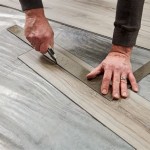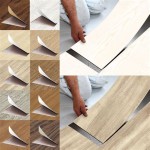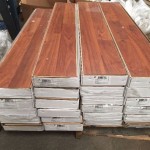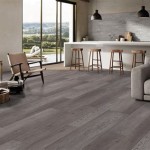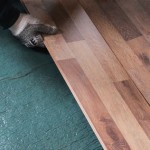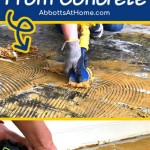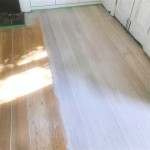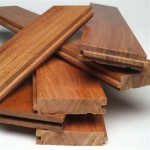Is Carpet Tape Bad for Hardwood Floors and Concrete?
Carpet tape, a common adhesive product used to secure rugs and carpets to various surfaces, raises concerns regarding its potential impact on hardwood floors and concrete. The composition of carpet tape, the types of surfaces it’s applied to, and the duration of its application are all factors that influence the likelihood of damage. This article comprehensively explores the potential adverse effects of carpet tape on hardwood floors and concrete, examining the mechanisms of damage and offering insights into preventative measures and alternative solutions.
Carpet tape typically consists of a pressure-sensitive adhesive coated onto a carrier, often a film or fabric. The adhesive is designed to create a strong bond between the carpet and the subfloor, preventing slippage and enhancing safety. However, the very properties that make carpet tape effective can also contribute to its potential for causing damage, particularly to delicate surfaces like hardwood or porous materials like concrete.
The type of adhesive used in carpet tape varies. Some tapes employ natural rubber-based adhesives, while others utilize synthetic acrylic or rubber compounds. Natural rubber adhesives tend to be more aggressive and can leave behind significant residue upon removal. Acrylic adhesives, on the other hand, are often touted as being more removable, but their performance can vary depending on the specific formulation and the surface to which they are applied. Regardless of the adhesive type, the bonding strength and the potential for chemical interaction with the flooring material are critical considerations.
The duration for which carpet tape remains adhered to a surface also plays a crucial role in determining the extent of any potential damage. Prolonged exposure can lead to the adhesive bonding more tightly to the floor, making removal more difficult and increasing the likelihood of residue and surface damage. Furthermore, the adhesive can interact with the finish on hardwood floors or penetrate the porous structure of concrete over time, compounding the problem.
Hardwood Floor Damage: The Potential Pitfalls
Hardwood floors are particularly susceptible to damage from carpet tape due to the nature of their finish and the wood itself. The finish layer, typically polyurethane or varnish, provides a protective barrier against everyday wear and tear. However, it is not impervious to the aggressive adhesion of carpet tape.
One common issue is finish removal. When carpet tape is removed, the adhesive can pull away the finish along with it, leaving behind a dull or damaged spot. This is especially true if the tape has been in place for an extended period or if the finish is already weakened or damaged. The bond between the adhesive and the finish can become stronger than the bond between the finish and the wood itself, leading to delamination.
Another potential problem is adhesive residue. Even if the finish remains intact, removing carpet tape often leaves behind a sticky residue. This residue can be difficult to remove and can attract dirt and grime, further compromising the appearance of the floor. Some cleaning agents used to remove the residue can also damage the finish, creating a secondary problem.
In more severe cases, carpet tape can even damage the wood itself. If the adhesive penetrates the finish and comes into direct contact with the wood, it can cause discoloration or staining. This is more likely to occur if the floor has scratches or cracks in the finish. The adhesive can seep into these imperfections and permanently alter the wood's appearance.
The type of hardwood flooring also impacts its susceptibility to damage. Softer woods, such as pine, are more prone to denting and scratching than harder woods like oak or maple. Consequently, carpet tape removal from softer woods can result in more noticeable and permanent damage.
Proper preparation and preventive measures are essential to minimize these risks. Before applying carpet tape to hardwood floors, it is advisable to test a small, inconspicuous area to assess the tape's adhesion and potential for damage. Using low-tack carpet tape specifically designed for delicate surfaces is also a prudent choice. Additionally, limiting the duration of the tape's application and using appropriate removal techniques can help protect the floor's finish.
Concrete Surface Issues: Porosity and Adhesive Interaction
While concrete is typically considered a more durable surface than hardwood, it is not immune to the negative effects of carpet tape. Concrete's porous nature makes it particularly vulnerable to adhesive penetration and residue accumulation.
The porosity of concrete allows the adhesive from carpet tape to seep into the surface, creating a strong bond that can be difficult to break. When the tape is removed, the adhesive residue can remain embedded in the pores, leaving behind a persistent sticky or discolored area. This residue can attract dirt and grime, making the concrete surface look unclean and unmaintained.
Furthermore, certain types of carpet tape adhesives can react with the concrete itself, leading to discoloration or etching. This is more likely to occur with acidic or alkaline adhesives. The chemical reaction can alter the concrete's composition, causing permanent stains or surface damage.
In some cases, removing carpet tape from concrete can even cause the surface to chip or flake. This is especially true if the concrete is old or weakened. The adhesive can pull away small pieces of the concrete surface, leaving behind a rough or uneven texture.
Sealed concrete surfaces offer some protection against carpet tape damage. A sealant creates a barrier that prevents the adhesive from penetrating the concrete's pores. However, even sealed concrete can be damaged if the sealant is compromised or if the carpet tape is left in place for an extended period.
To minimize the risk of damage to concrete floors, it is crucial to choose carpet tape specifically designed for use on concrete. These tapes typically have a lower tack adhesive that is less likely to penetrate the surface. Properly cleaning and preparing the concrete surface before applying the tape can also help prevent damage. Consider also applying a concrete primer before applying carpet tape. This will cause the primer and not the surface of your concrete to be damaged.
Factors Influencing Damage and Mitigation Strategies
Several factors influence the severity of damage caused by carpet tape on both hardwood floors and concrete surfaces. These factors include the type of adhesive, the duration of application, the surface condition, and the removal techniques employed.
The type of adhesive is a primary determinant of potential damage. Aggressive adhesives with high bonding strength are more likely to cause finish removal on hardwood floors and adhesive residue on concrete surfaces. Opting for low-tack or residue-free carpet tapes can significantly reduce the risk of damage.
The duration of application is another critical factor. Prolonged exposure to carpet tape increases the likelihood of the adhesive bonding more tightly to the floor and penetrating the surface. Limiting the time the tape remains in place can minimize the potential for damage.
The surface condition also plays a role. Damaged or weakened finishes on hardwood floors and porous or unsealed concrete surfaces are more susceptible to damage from carpet tape. Addressing any existing damage before applying the tape can help protect the floor. Pre-cleaning carpet and surfaces can help reduce friction when people walk on the surface and also prevent particle build up for an easier removal process. This also helps with the bond between the tape and surface. Clean surfaces make it easier to remove tape adhesive.
Proper removal techniques are essential for minimizing damage. Avoid pulling the tape straight up, as this can increase the likelihood of finish removal or surface damage. Instead, gently peel the tape back at a low angle, using a plastic scraper or putty knife to help loosen the adhesive. Applying heat from a hairdryer can also soften the adhesive and make removal easier. Use professional tools for carpet tape removal.
If adhesive residue remains after removing the tape, use appropriate cleaning agents to remove it. Test the cleaning agent in an inconspicuous area first to ensure it does not damage the floor's finish or the concrete surface. Avoid using harsh chemicals or abrasive cleaners, as these can cause further damage.
Alternative solutions to carpet tape can also be considered. Rug pads, for example, provide cushioning and prevent slippage without the use of adhesive. These pads are available in various materials and thicknesses and can be tailored to different types of flooring. They are also easily removable and reusable, making them a more convenient and less damaging option than carpet tape. Consider using rugs that have a rubber backing. This will reduce the need to use carpet tape and will also keep your rugs and carpets in place.
In conclusion, while carpet tape can be a convenient solution for securing rugs and carpets, it poses a potential risk to hardwood floors and concrete surfaces. Understanding the mechanisms of damage, choosing appropriate carpet tape products, employing proper application and removal techniques, and considering alternative solutions are all essential steps in protecting these valuable flooring materials. Regular maintenance and preventative measures are crucial for preserving the long-term appearance and integrity of hardwood floors and concrete surfaces.

Pros And Cons Of Applying Rug Tape On Your Floors Carpets Rugpadusa
How To Use Carpet Tape

Will Double Sided Carpet Tile Tape Leave A Sticky Residue Or Damage My Floor

Pros And Cons Of Applying Rug Tape On Your Floors Carpets Rugpadusa

Pros And Cons Of Applying Rug Tape On Your Floors Carpets Rugpadusa

Flooring How Can I Remove Carpet Adhesive From Hardwood Floors Home Improvement Stack Exchange

Roberts Rug Gripper 60 Ft Indoor Carpet Tile Solid Hardwood Laminate Vinyl Tape Roll 50 588 The Home

Do This Before Laying Carpet In Your Basement

L And Stick Flooring 5 Myths Debunked

Shurtape 1 88 In X 75 Ft White Double Sided Seam Tape 280396 At Com
See Also
